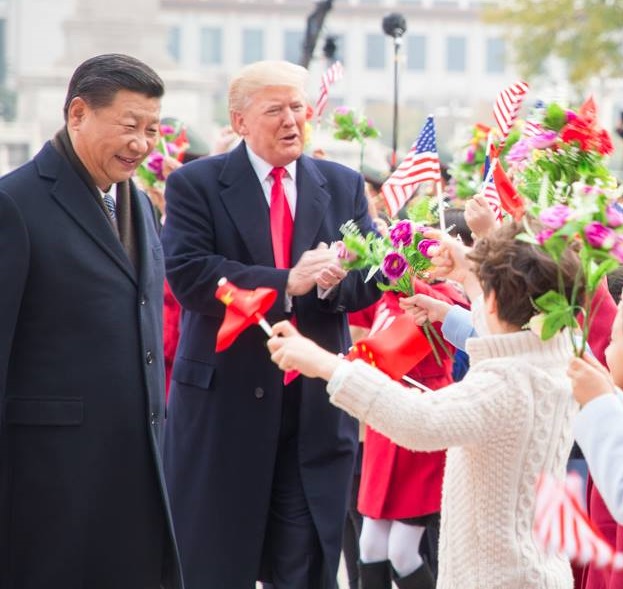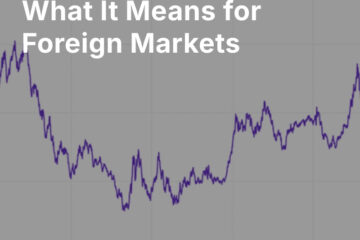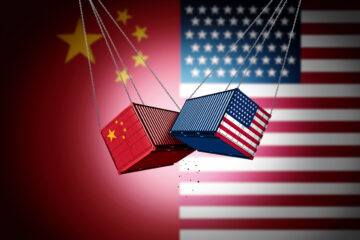At the very end of 2019, China added liquidity to its financial system by loosening the reserve requirements for banks and allowing them to lend more. This move followed three other such cuts earlier in the year, making a total of seven since early 2018.
Cutting required reserves is a way of freeing banks to lend more into the economy. This is a more restrained form of economic stimulus than fiscal measures such as tax cuts or increased government spending, and it is thought to be less likely to create speculative excess than direct interest-rate cuts. Such modest stimulus measures are an implicit acknowledgement of an economic slowdown, and a sign that the Chinese government wants to find a middle ground where it can soften that slowdown without further exacerbating systemic risks to the country’s financial system.
Slowing China
China’s economy has indeed slowed. Even by official statistics, it has registered the slowest growth in nearly 30 years. However, the real growth picture is almost certainly weaker than the official data suggest. We have long known that official economic statistics in China were largely unreliable, and thus for a more accurate picture we rely on the work of China economists and analysts who use other data (such as import and export statistics from China’s trading partners). But over the past year, stories about the unreliability of Chinese economic data have gone mainstream, and thus, skepticism has become more widespread. The world’s investors hear the Chinese government talking about 6% GDP growth, and rather than taking it more or less at face value, they knock a few percentage points off.
Why then is China not “opening the floodgates” as they did in the aftermath of the Great Recession? Simply because that action created problems that have yet to be resolved — an excess of leverage and risk that a fresh stimulus flood might tip into a financial crisis. So as we have reported to you before, the “rock” and “hard place” for China are an economic slowdown on one hand, and financial instability risks on the other.
What’s Causing the Slowdown?
The question that rises in most investors’ minds is naturally, What is causing the Chinese slowdown? Specifically — is it the trade war?
It is ultimately impossible to precisely parse out the economic variables contributing to the slowdown. On the ground, anecdotal evidence suggests that the trade war is indeed a significant contributor. It is not showing up in a big way in the macro data, but many liaisons between Chinese manufacturers and western firms talk about how their western clients want to shift their sourcing to China’s neighbors wherever feasible.
Here, though, the broader picture becomes important. We have been reporting to you about the shift of low-end manufacturing out of China for many years — long predating the current trade war. This shift started for the same reason that manufacturing went to China in the first place. China succeeded at creating a middle class through the promotion of manufacturing exporting. That success led to rising wages and living standards for Chinese workers. And those rising wages led, in turn, to the beginning of an exodus of manufacturing from China to its neighbors where labor costs were lower. There is nothing extraordinary about this process; it is simply the progress of economic globalization, and ceteris paribus, it’s a good thing; it’s how countries move from poverty to middle-income status. It means fewer poor and hungry people. We’re fans.
In China’s case, that shift has been underway for a long time. But the real world never follows the smooth model… and in the real world, there are a few major confounding events, trends, and themes that have made China’s shift complex and difficult.
One… The Great Recession
In the midst of China’s boom as the global workshop, the Great Recession happened, threatening to derail the process. Our regular readers will be aware of our view that success in creating and maintaining growth is an existential concern of the Chinese Communist Party. The risk of a recession therefore called forth a massive stimulus effort to blunt the effects of the global crisis. That in turn generated a massive excess of leverage in the country’s financial system, which they are still trying to gradually defuse today. That hangover from the last problem restricts the government’s options in dealing with the current problem… and may eventually come to a head no matter what they do, though probably not for several more years.
Two… The Geopolitics
Of course, China is not just any developing country. It is a regional hegemon with ambitions to become a global great power on the same level as the developed western liberal democracies. It is presenting the rest of the developing world a different, competing model for development: an authoritarian form of capitalism. We are fundamental optimists and believers in the power of liberty, and we think history shows abundant evidence that tyranny cannot match the prosperity and progress achieved by free peoples. It is likely that China’s authoritarian model will eventually fail due to its own internal contradictions. But in the meantime, the psychology of China’s rulers will be directed not just to maintaining their own power, but to the pursuit of China’s geopolitical stature. Pride matters, and saving face matters (as of course, it often does for the west as well).
These two factors have shaped China’s economic and foreign policies in their critical period of transformation to the global middle class. But then a third factor came suddenly and unexpectedly onto the stage.
Three… Donald Trump

We have often observed that President Trump’s attitude to China has been one of his consistent, long-term views. We have seen it in his pubic comments since the 1980s. Since his election we have anticipated that whatever unpredictability there might be in other policy areas, this one would be a constant. We have been correct.
The current administration’s policies are, in themselves, not enough to have caused China’s slowdown. However, they are a critical additional stress added on top of the others: the delicate transition from heavy industry to a consumer economy; the stresses of the global Great Recession; the policy limitations caused by the after-effects of the government’s stimulus; and the psychological requirements of China’s regional and global ambitions. The U.S. is leaning on a pain point, and knows it. Really, the pressure being placed on China by the U.S. is simply hastening the manifestation of problems and trends that have been bewing for many, many years. Trump is fundamentally a catalyst, not a cause.
Investment implications: In the midst of all the news flow about the trade war, investors should not lose sight of the fact that this will be a very long-term process — not a brief one with a quick return to the status quo. The current administration’s conviction in pursuing its current China policies is not the most salient point. Rather, it is that the administration is revealing and sharpening fault lines that have long existed, and will continue to exist for years. Deals can be made; a modicum of trade peace can be re-established, and, we believe, will be. But the old status quo, which hid these fault lines, is likely gone for many years to come.



